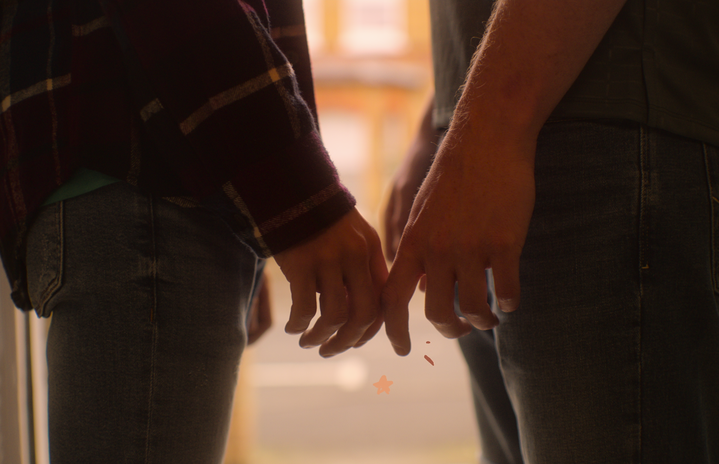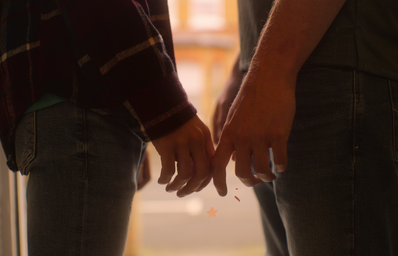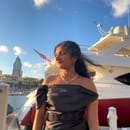Asexuality seems to be a newer concept that has surfaced as the LGBTQ+ community has become more open and accepted in the modern world. It refers to the quality of having little to no sexual attraction or desires, and although many people who are educated on most aspects of the LGBTQ+ community are still unfamiliar with the term, this sexual orientation has been present for much longer than people would expect. For as long as it has existed, asexual or “ace” people have been historically estranged from those who identify as one of the more conventional sexualities of the LGBTQ+ community due to a debate as to whether the identity counts as queer. On top of that, the vast majority seem to believe that asexuality is a modern identity and has even been dubbed the “internet orientation.” However, asexuality isn’t much different from other sexual orientations in terms of historical presence, hence why I believe it is necessary to learn more about the first origins of asexuality.
Unsurprisingly, asexuality first appeared as a type of mental disorder in 1886 when German sexologist Richard von Krafft-Ebing published Psychopathic Sexual. He saw 10 cases of mainly men exhibiting a lack of sexual attraction and dubbed it Anæsthesia Sexualis, which he believed to be attributed to a mental disorder. Then in 1896, another German sexologist named Magnus Hirschfeld created a pamphlet called Sappho und Socrates which he mentions people who lack any sexual desire, linking them to Anæsthesia Sexualis. Not everyone believed this behavior to be a disorder however, as in 1897, German sexual reformist Emma Trosse gave the first known definition of asexuality in her work A woman? Psychological-biographical study of a contrary-sexual where she emphasizes that asexuality and same sex attraction alike were not “exceptions or abnormal.”
Sexual orientation had been confusing to define due to oppressing societal norms that didn’t allow for expression, but this changed in 1948 when entomologist Algred C. Kinsey conducted interviews to accurately track and measure the sexuality spectrum. He came up with the famous Kinsey scale to pinpoint a person’s sexual orientation, and it included category X for men who essentially reported no sexual reactions or contacts (this later included women in 1953). As lesbian feminism became popularized with The Woman-Identified Woman, Lisa Orlando wrote the Asexual Manifesto in 1972. Interestingly, Orlando was a part of the New York Radical Feminists, which made three caucuses based on sexual orientation. She felt that none of the caucuses resonated with her asexual identity, so along with her colleague Barbie hunter Getz she formed the Asexual caucus, and she defined asexuality as “relating sexuality to no one.”
As the LGBTQ+ movement gained more traction, activists at Barnard College in New York in 1973 were photographed with a poster that advocated for people to ‘Choose your own label,’ with asexuality being one of them. Additionally in 1979, a study conducted by Michael D. Storms redefines the Kinsey scale in a two-dimensional form, where the horizontal axis is ‘hetero-eroticism’ and the vertical axis is ‘homo-eroticism,’ thus broadening the scale of sexuality as a whole. Asexual people would have reported little to no hetero-eroticism or homo-eroticism on the scale, while bisexual people would have high hetero-eroticism and homo-eroticism.
Asexuality became more and more popular around the late 1900s and early 2000s alongside the rise of the internet. In 1997, the article My life as an Amoeba was published by Zoe O’Reilly which featured a first-person perspective on asexuality, sparking a realization in many regarding their sexual identities.
“School science books make the barest mention of our kind and even then stick to the single-celled variety. As far as the rest of the world is concerned, asexual organisms with more than one cell don’t exist.”
O’Reilly, Zoe. “My Life as an Amoeba.” Starnet Dispatches, 30 May 1997, web.archive.org/web/19970626042139/http:/dispatches.azstarnet.com/zoe/amoeba.htm.
Finally in 2000, the Have for the Human Amoeba (HHA) support group was formed on Yahoo, followed by the Asexual Visibility and Education Network (AVEN) founded by David Jay in 2001. Initially he defined asexual people as those who are “attracted to neither gender” on the AVEN website, but now it has changed to “a person who does not experience sexual attraction” as to respect non-binary people (this is still featured on the website today). In terms of legislation, the Sexual Orientation Non-Discrimination Act passed in New York is the first and only piece of legislation to mention asexuality.
Today we see asexuality more prominently in both entertainment and social media. The popular show Bojack Horseman features a character named Todd Chavez whose journey to asexuality is shown throughout multiple seasons of the show. The model Yasmin Benoit is also a prominent aroace (aromantic asexual) figure who created and popularized the Twitter hashtag #ThisIsWhatAsexualLooksLike. And since 2010 by virtue of Sara Beth Brooks, Asexual Awareness Week is celebrated from October 25-31.
After learning about the presence of asexuality throughout history, I hope people will realize that it is not a modern concept, nor is it an “internet orientation.” Despite discourse that continues till this day, and as an aroace person myself, I believe that asexuality is a valid sexual orientation that should not be estranged from other sexualities of the LGBTQ+ spectrum due to the ambiguity that has surrounded its definition for years until recently. It is also necessary to create support groups and organizations such as AVEN to set these definitions in stone, so that those who continue to struggle with their queer identity can find their place in the LGBTQ+ community.


